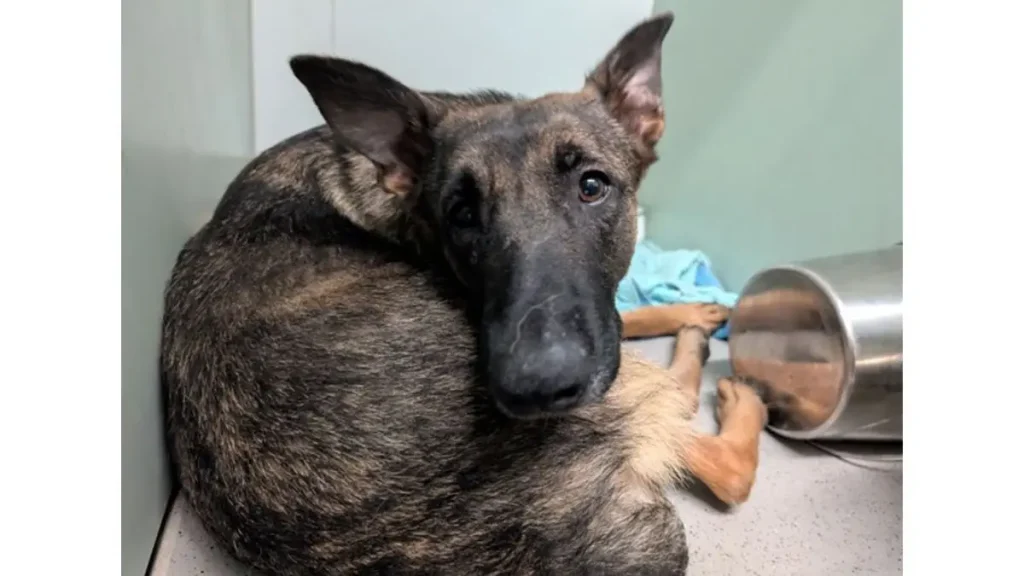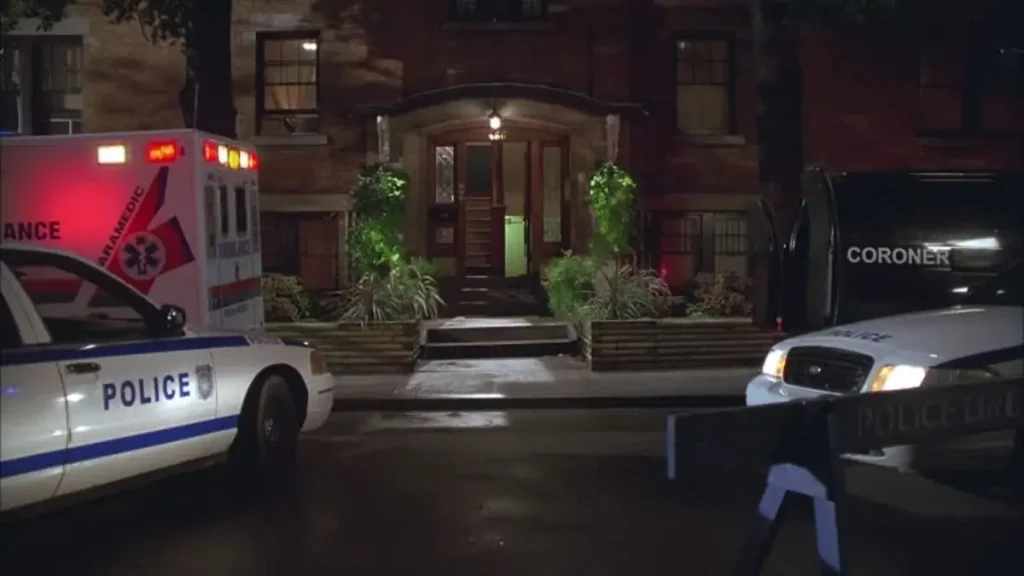Queens Apartment Horror as Rescuers Find Forty Eight Dogs in Small Unit
I want you to picture this: you open the door to a one-bedroom apartment in Queens—and the first thing that hits you isn’t the sight. It’s the smell. Overpowering ammonia, thick in the air. Your eyes sting. You can barely breathe and then you see them.
Forty-eight dogs. Not small ones. Full-grown Belgian Malinois, hiding in closets, stacked in cages. Some squeezed into kitchen drawers. Every inch of space covered in filth—feces, urine, piles of debris. No sunlight, no ventilation, just fear and chaos.
This isn’t a scene from some forgotten corner of the world. This happened in Forest Hills, right here in New York City. And if you’re thinking, “How did no one notice?”—you’re not alone. I thought the same thing.
The man responsible, Isaac Yadgarov, wasn’t even there when rescuers arrived. He was supposed to surrender the dogs after facing eviction, but what they found went way beyond a guy who let things get out of hand. Some of those dogs were so sick they had to be put down. That doesn’t happen overnight. That’s months—maybe years—of silent suffering.
It makes you ask some hard questions. How does someone collect that many dogs without raising red flags? Where were the neighbors, the landlord, the system?
You might not think something like this could happen in your building or on your block—but it can. And unless we talk about it, unless we stay alert, it will happen again.
Who’s Behind This — What We Know About Isaac Yadgarov
When I first read about the man responsible, I expected to find a monster. But what I found was something more complicated—and maybe even more disturbing.
The person at the center of this case is 37-year-old Isaac Yadgarov. According to People, he was already facing eviction when he agreed to surrender the dogs. But when the rescue teams showed up? He vanished, just disappeared leaving behind dozens of dogs trapped in unbearable conditions.
It wasn’t until almost two weeks later, on May 13, that he turned himself in. Right now, he’s facing 96 misdemeanor charges—two for each dog. Overdriving, torturing animals, failing to provide food and shelter. And honestly, that still feels like too little.
I know what you might be thinking: “Was this a case of cruelty or someone in over their head?” That question matters—because how we handle it sets a precedent. If someone hoards 48 dogs and walks away with a slap on the wrist, what message are we sending?
This isn’t just about one man. It’s about responsibility. About the line between rescuing and hoarding—and what happens when that line gets crossed.
Inside That Apartment — What No Dog Should Ever Experience

Let me be straight with you. No living being should ever be kept in the conditions described in that apartment. And if you’ve read the New York Post’s report, you already know—it wasn’t just bad. It was hellish.
Dogs were stacked in crates. Some were living in drawers. There was no clean water, no space to move, no fresh air. The entire apartment was soaked in urine and feces. The smell? So strong that experienced responders had to put on masks and still struggled to breathe.
I can’t stop thinking about the silence in that place. Not barking—just scared, confused dogs, waiting for something to change.
According to the Post, three of them were beyond saving. They were in such poor shape they had to be put down. The rest are now in shelters, recovering—but their trauma doesn’t just vanish.
You and I both know dogs are not just animals. They’re companions. They feel fear, pain, loneliness. And in that Forest Hills apartment, they were treated like trash.
So ask yourself: if 48 dogs can live like that behind one door, how many more are out there—suffering in silence?
Why Animal Hoarding Happens — And What You Should Watch For
Here’s something you may not want to hear: animal hoarding isn’t rare. In fact, it’s more common than most people think—and it often starts with good intentions.
Somebody wants to help. They take in a stray, then another. And then suddenly, they’re drowning—and the animals are the ones who suffer.
If you’re like me, you probably asked: Why didn’t he just ask for help? But the truth is, animal hoarding is usually tied to deeper mental health issues—like obsessive-compulsive disorder, depression, or trauma. It’s not always about cruelty, sometimes it’s about denial, shame, isolation.
But that doesn’t make the outcome any less devastating.
The ASPCA defines hoarding as having more animals than you can properly care for—and refusing to let them go, even when it’s clear they’re suffering. And here’s the kicker: in many cases, hoarders don’t think they’re doing anything wrong. That’s what makes it so dangerous.
So what should you watch for?
- A strong odor coming from someone’s home
- Constant barking or crying
- Sick or skinny animals
- Someone who always seems to “rescue” but never adopts out
If you ever get that gut feeling that something’s off—it probably is. And saying something could save lives.
Have you ever wondered if someone in your building was hoarding animals—but weren’t sure what to do?
Have you ever seen a situation that felt “off”—but weren’t sure what to do? Drop your thoughts in the comments. You never know who might need to hear them.
What Charges Really Mean — And Why It Might Not Be Enough
When you hear that someone who hoarded 48 dogs could face “up to one year in jail,” how does that sit with you?
Because honestly, when I read the QNS report, that number felt too low, too light, too far from justice.
Isaac Yadgarov is facing 96 misdemeanor charges—two per dog—for overdriving, torturing, and failing to provide adequate food, water, and shelter. But under current New York law, even with all those counts stacked together, he might not serve serious time.
This isn’t about revenge. It’s about consequences that fit the harm done. You and I both know that if these were 48 people, or even 48 stolen cars, the penalty would be massive. But because they were dogs—sentient beings who suffered quietly—it’s treated like a minor offense?
We need to ask ourselves: Do our laws actually protect animals—or just punish after the fact, when it’s too late?
And if they don’t protect, then what do we do next?
If this story makes you angry, good. It should. That’s how change starts.
Community and Organizational Response

Let’s talk about the people who actually did something.
When neighbors complained about the smell and constant barking, it set off a chain reaction. The NYPD, ASPCA, and NYC Animal Care Centers (ACC) came together for a full-scale rescue operation. And let me tell you—what they walked into wasn’t routine.
According to officials, the rescue took hours. It wasn’t just about removing the dogs. Many were dehydrated, injured, terrified. Every single one had to be carried out, examined, and sent for emergency care.
This is what gives me hope—when the system works. When people make noise, then agencies act fast and take suffering seriously.
And you can be part of that, too. Reporting suspected cruelty doesn’t make you “nosy.” It makes you brave, it makes you someone who didn’t look away.
So if you ever hear something off—barking that doesn’t stop, a smell that turns your stomach—say something. You could be the reason 48 dogs live instead of die.
Do you think neighbors should take more responsibility in spotting cruelty early on? Let’s discuss below—your voice might help someone speak up next time.
Where the Dogs Are Now — And Why Their Story Isn’t Over
Here’s the part most headlines won’t tell you: the rescue isn’t the end of the story. For those 48 dogs, it’s just the start.
Right now, they’re under the care of ACC and the ASPCA. Many are malnourished. Some are terrified of humans. Most have never even walked on grass, or felt safe in an open space.
Rehabilitation isn’t easy. It takes weeks—sometimes months—of slow, patient work. Some dogs might recover fully and be adopted into loving homes. Others may always carry some of the trauma.
But here’s the good news: you can help. Whether it’s through donations, fostering, or just sharing their stories, you can play a role in their healing.
Because healing doesn’t just happen in shelters. It happens when people like you open their homes—and their hearts.
These kinds of stories made me rethink how little we sometimes know about what’s happening right next door. A lot of folks in my area have started paying more attention—not just to crime, but to animal neglect, break-ins, even local emergencies.
Some rely on apps, some follow police scanners, and a few of us are part of low-key WhatsApp groups where neighbors quietly share updates on what’s going on—like suspicious activity, rescues, or urgent alerts.
One group I’m in focuses on home safety and real incident reports. It’s not noisy or dramatic—just useful. It’s honestly helped me stay a few steps ahead when something goes wrong around the block.
How You Can Stop This From Happening Again?
Let’s get real—this won’t be the last case like this in NYC. Or maybe even on your own block.
Animal hoarding isn’t some rare freak incident. It hides in plain sight. Behind closed doors. Behind good intentions. And unless more people like you and me learn how to spot it—and act on it—it’ll keep happening.
So, what can you do?
Start with the signs:
- Strong, foul odors coming from someone’s apartment
- Constant barking or howling, especially at odd hours
- Seeing animals that look underfed, scared, or injured
- Someone who always talks about rescuing animals but never adopts any out
If something feels off, trust your gut. You can call 311 in NYC to report concerns anonymously. You can also reach out directly to animal welfare groups like the ASPCA or NYC ACC.
And beyond reporting, you can support the organizations that are in the trenches—donate, foster, volunteer, or just share their work online.
This isn’t just about saving animals. It’s about being the kind of neighbor, citizen, and human who doesn’t look away when it matters.
Because if 48 dogs can suffer behind one locked door, how many more are suffering silently right now?
And sadly, this isn’t an isolated case. Just weeks earlier, a similar scene unfolded in Ohio, where 38 dogs and 7 ferrets were found living in equally horrifying conditions.
Final Thoughts
You and I both know this story isn’t just about one man or one apartment. It’s about something bigger—about how easy it is for suffering to go unnoticed when we stop paying attention.
What happened in that Forest Hills apartment was shocking, yes—but it wasn’t sudden. It built up, day by day, while dozens of dogs sat in darkness, waiting for someone to care enough to do something.
Now they’ve been rescued. Now there’s a man facing charges. But the real work starts with what we do next.
Will we hold our laws to a higher standard?
Will we support the people and groups doing the hard, quiet work of saving lives?
Will we speak up before things reach a crisis point?
That’s up to us.
Disclaimer: This article is based on publicly available reports and official statements. Details may evolve as the case develops. Readers are encouraged to refer to local authorities or verified sources for the latest updates.


